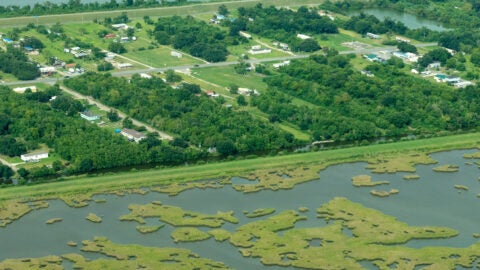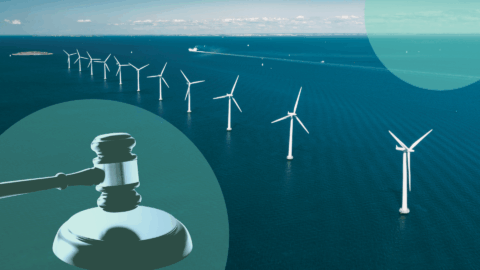
As New York continues to await cap-and-invest program, studies show just how impactful these programs can be
New York just experienced a brutal heatwave, with several cities experiencing the hottest days ever recorded, underscoring the urgent need to address the climate crisis.
As temperatures heat up, so do energy prices as New Yorkers continue to struggle with higher cost of living and economic uncertainty. To make matters worse, across the country polluters and their political allies are working to stall progress and roll back the clock on climate action. In the face of those attacks, states must be the firewall.
New York has the chance to lead by example — tackling climate change while reducing costs for many New Yorkers and spurring economic growth — through the adoption of a bold, economy-wide cap-and-invest program.
Reducing pollution and transitioning to clean energy will make New York more livable — Cap-and-Invest is how we do this
New York’s proposed cap-and-invest program, also known as the Clean Air Initiative, would place a firm, declining limit on climate pollution from the state’s largest emitters and require them to pay for their pollution. The proceeds would then be reinvested into clean energy, community projects and affordability programs that support New Yorkers, especially low- and middle-income New Yorkers and those most impacted by pollution. In other words, this is a program designed to reduce pollution, grow the economy and deliver real benefits for families across the state.
New York doesn’t have to guess how the program will benefit the state; it can see the impacts in real-time by examining the two states that already have these programs — California and Washington state.
California’s cap-and-trade program
A recent report shows just how much of a force for economic growth and household savings a strong cap-and-invest program can be, especially for low- and middle-income families. The report from Greenline Insights and Environmental Defense Fund focused on California finds that by extending its program to 2045, Californians will see:
- $3.9 billion in net savings for the state’s most economically vulnerable families, with nearly $700 in benefits and savings for families earning $70,000 or less.
- 287,000 new jobs created by cap-and-trade program investments, with average wages of $93,600, primarily in construction, local transit, architecture and engineering, and agriculture and forestry.
- $55 billion in total economic growth supported by cap-and-trade investments, with gains reaching every county in the state.
And the benefits are even greater with more climate ambition. For example, if California’s cap-and-trade program covered more sources of pollution, such as agriculture emissions, the analysis shows the program could increase total investment by as much as 50%. This additional investment would create 400,000 more jobs and invest in more household-level programs to keep costs down for families.
Washington state’s cap-and-invest program
California isn’t the only example demonstrating how benefits stack up. A 2024 report on the cap-and-invest program in Washington state, also by Greenline Insights, estimated in the first eight years the program could generate:
- Over 45,000 jobs.
- $9.1 billion in economic output in sectors like clean energy, building efficiency, maritime and manufacturing.
- Investments in efficient homes and buildings alone are projected to create nearly 7,000 new jobs and $1.6 billion in economic activity.
Moreover, voters understand the positive impacts that these programs have on their states. When a hedge fund manager put up millions in an attempt to repeal Washington’s cap-and-invest program through a ballot initiative in November, voters rejected the attempt by a 23-point margin — a wider margin than either the gubernatorial or presidential race in the state.
Potential benefits from New York’s program
The benefits these programs deliver are real and meaningful, and New York’s program can build upon successes from California and Washington state. New York’s program is projected to generate between $61 and $126 billion over its first 11 years. This joins a growing body of research that resoundingly shows just how much New Yorkers stand to benefit from a cap-and-invest program.
Governor Hochul has said she won’t let federal rollback derail New York’s progress. Finalizing strong cap-and-invest regulations this year is the most crucial step toward fulfilling that promise and ensuring New Yorkers experience cleaner air, greater economic opportunity and more affordable energy now, not later.












